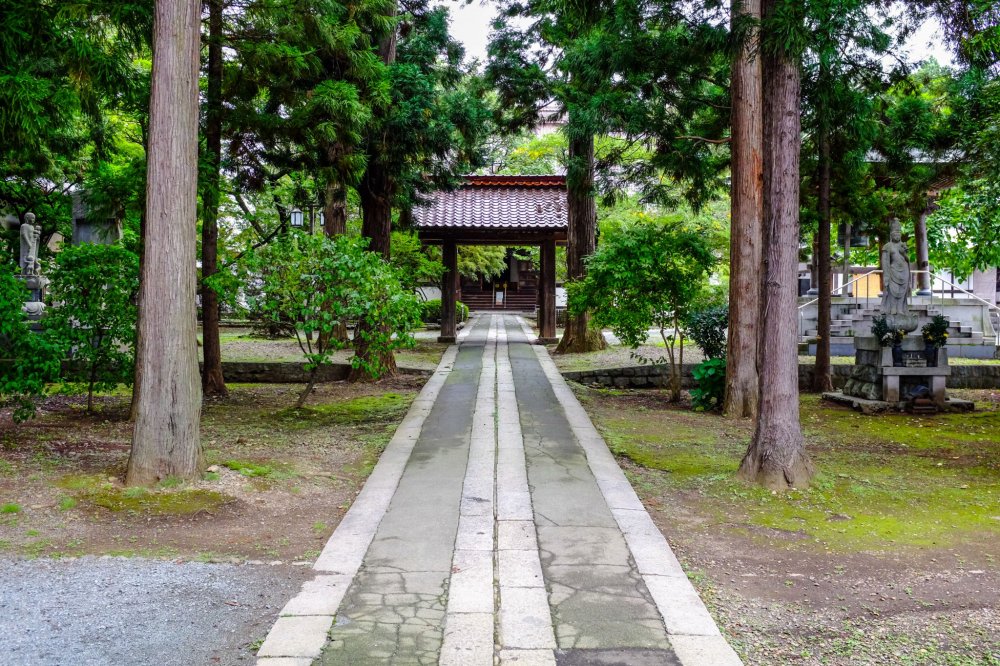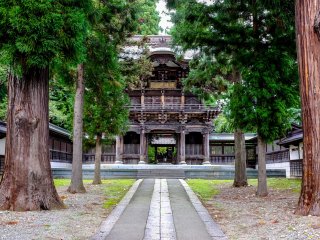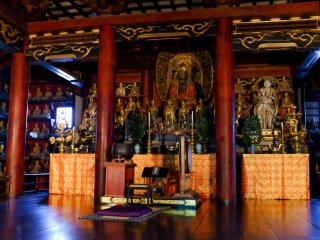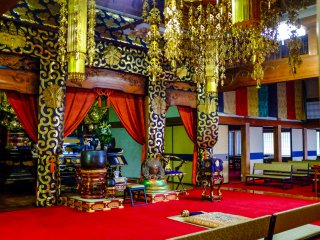Hoonji Temple is nestled in amongst some of Morioka's most beautiful temples along Teramachidori Ave, one of Japan's 100 Best Roadscapes. The temple is largely known as the home of 500 Buddhist Disciples statues, which were hand crafted between 1731 and 1735 by nine artesians from Kyoto. Hoonji Temple was built in 1394 by the 13th Lord of the Nanbu Family, Moriyuki, and moved to its present location by the 27th Lord, Tashinao in 1601. Hoonji Temple has been known as a Zen training temple for monks, a family temple for 1,000 families and is also a place of Zen meditation for the public. The 500 Buddhist statues, located in the Rakando Hall, are nothing short of spectacular and really is a sight that needs to be seen to be believed. Today, only 499 statues remain, most of which are visible to the public seven days per week from 09:00 ~ 16:00. Admission for adults is 300 yen, and children 100 yen.
- 1 min read
Hoonji Temple
Home of 500 Buddhist Disciples

By Chris Barnes
Community writer

The Buddhist statues line the left and right side walls, each statue represented by a different face and gesture

The Rakando which features the 500 Buddhist Disciples Statues are now Cultural Assets of Morioka City

The Sanmon main gate was built in 1978 to replace the old Chumon gate which is said to be one of the gates which were standing in Morioka Castle

The Rakando Hall was built in 1753. The central statue, Rushana-butsu, represents the enlightenment of Shakyamuni Buddha. Child statues on each side represent those seeking Buddhism

The main hall was destroyed by fire in 1960 and rebuilt in 1964. A Shakyamuni Buddha statue can be found inside the main hall.

The Zazendo Zen Hall is located behind the main hall and seats 54 people for Zen meditation

Hoonji Temple features tranquil gardens with many statues, unfortunately most of these are in Japanese only

The lack of crowds make visiting Hoonji Temple a treat. Away from the hustle and bustle of the city, you can really feel a sense of relaxation as you wander the grounds

The area of the temple is 7,000 Tsubo (250,000 sq. ft.) and features 30 branch temples
Join the discussion
Elena Lisina
4 years ago
Impressive!
According to the information at the temple, 500 is purely a figure of speech, symbolic of "Many" disciples.
Michael Flemming
12 years ago
What happened to the one statue that is missing, is there any indication as to its fate? It seems amazing that virtually all are still available for the public to enjoy.
3 comments in total
Book your trip
Find a nearby hotel
Explore some of the best nearby hotels and deals for the perfect place to stay in Japan.
Top Articles
-
![Japan Pottery Tour: Hands-On Workshops & Artisan Encounters Japan Pottery Tour: Hands-On Workshops & Artisan Encounters]() 1
1Japan Pottery Tour: Hands-On Workshops & Artisan Encounters
Culture -
![See Southern Japan with Kirishima As Your Gateway See Southern Japan with Kirishima As Your Gateway]() 2
2See Southern Japan with Kirishima As Your Gateway
Kagoshima - Sponsored -
![Discover Shiga Prefecture: Events at COCOSHIGA in Tokyo Discover Shiga Prefecture: Events at COCOSHIGA in Tokyo]() 3
3Discover Shiga Prefecture: Events at COCOSHIGA in Tokyo
Tokyo - Sponsored -
![An Intellectual Journey Through Fujita Tsuguharu’s Legacy in Akita An Intellectual Journey Through Fujita Tsuguharu’s Legacy in Akita]() 4
4An Intellectual Journey Through Fujita Tsuguharu’s Legacy in Akita
Akita - Sponsored -
![Spa Resort Hawaiians: A Tropical Escape with a Japanese Soul in Iwaki Spa Resort Hawaiians: A Tropical Escape with a Japanese Soul in Iwaki]() 5
5Spa Resort Hawaiians: A Tropical Escape with a Japanese Soul in Iwaki
Fukushima - Sponsored -
![A Journey Through Western Kyushu A Journey Through Western Kyushu]() 6
6A Journey Through Western Kyushu
Nagasaki - Sponsored -
![Experience Oarai: A Quiet Fishing Town Blessed by the Bounty of the Sea Experience Oarai: A Quiet Fishing Town Blessed by the Bounty of the Sea]() 7
7Experience Oarai: A Quiet Fishing Town Blessed by the Bounty of the Sea
Ibaraki - Sponsored -
![An Immersive Look Into Akita’s Food Heritage An Immersive Look Into Akita’s Food Heritage]() 8
8An Immersive Look Into Akita’s Food Heritage
Akita - Sponsored -
![A Taste of Shiga at COCOSHIGA A Taste of Shiga at COCOSHIGA]() 9
9A Taste of Shiga at COCOSHIGA
Tokyo - Sponsored -
![A Hidden Getaway in Yaizu, Shizuoka A Hidden Getaway in Yaizu, Shizuoka]() 10
10A Hidden Getaway in Yaizu, Shizuoka
Shizuoka - Sponsored
-
![Tokyo Christmas Market Tokyo Christmas Market]() 1
1Tokyo Christmas Market
Tokyo -
![Guide to Bringing Medicines Into Japan Guide to Bringing Medicines Into Japan]() 2
2Guide to Bringing Medicines Into Japan
Planning -
![The Ultimate Guide to Thrifting in Tokyo The Ultimate Guide to Thrifting in Tokyo]() 3
3The Ultimate Guide to Thrifting in Tokyo
Shopping -
![Your Name: Real-Life Locations in Tokyo Your Name: Real-Life Locations in Tokyo]() 4
4Your Name: Real-Life Locations in Tokyo
Tokyo -
![Shibuya Blue Cave Illumination Shibuya Blue Cave Illumination]() 5
5Shibuya Blue Cave Illumination
Tokyo -
![Nabana no Sato Illumination Nabana no Sato Illumination]() 6
6Nabana no Sato Illumination
Mie -
![Winter in Japan: Your Seasonal Guide Winter in Japan: Your Seasonal Guide]() 7
7Winter in Japan: Your Seasonal Guide
Planning -
![Bad Bunny Debí Tirar Más Fotos World Tour Bad Bunny Debí Tirar Más Fotos World Tour]() 8
8Bad Bunny Debí Tirar Más Fotos World Tour
Tokyo -
![Japanese Urban Legends Japanese Urban Legends]() 9
9Japanese Urban Legends
Culture -
![Tokyo Auto Salon Tokyo Auto Salon]() 10
10Tokyo Auto Salon
Chiba



































